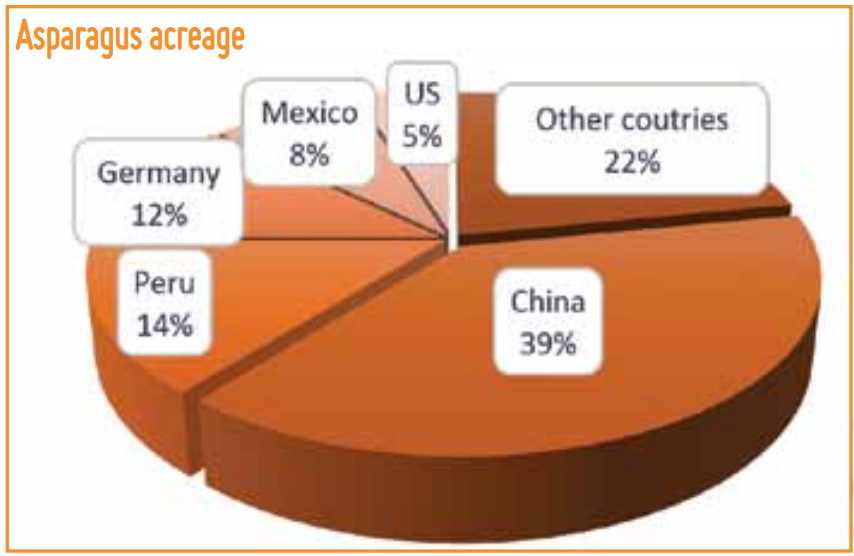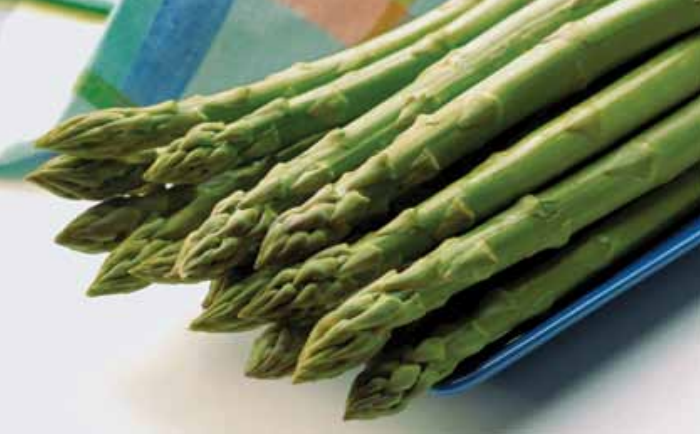Snapshot of global asparagus cultivation
Asparagus is a product grown and consumed all over the world. The main consumer countries are the US, Germany and Spain, with consumption in China now rapidly intensifying. Asparagus production and consumption is least developed on the African continent, where it is grown on a small scale in Morocco and South Africa.
The countries with the largest asparagus acreages are China (approx. 70,000 ha), Peru (approx. 25,000 ha), Germany (approx. 22,000 ha) and Mexico (16,000 ha). Of these four, Mexico’s acreage is the fastest-growing, with production focused on sales to the US.
The US acreage has dwindled by almost 65% over the past twelve years, partly as a result of the NAFTA, which reduced the import rates for Mexican asparagus from 25 to 0%. The burgeoning Mexican production is bad for the trade of Peruvian growers, who likewise rely on exports to the US.

The situation in Europe is reasonably stable; Germany is the absolute number one producer, and just under 80% of the almost exclusively white product is consumed inside Germany. The country with the fastest-growing market is the UK, where exclusively green asparagus is grown on an acreage that has increased around 50% to roughly 2,000 hectares in the past ten years.
British consumption has grown to the same extent, resulting in an occasional need for imports from time to time, even during the harvest season. Asparagus production seems to be well balanced and reasonably stable worldwide, with the rising living standards in Asian countries offering plenty of prospects for the long term.
This article appeared on page 48 of issue 142 (March/April 2016) of Eurofresh Distribution magazine. Read that edition online here.



